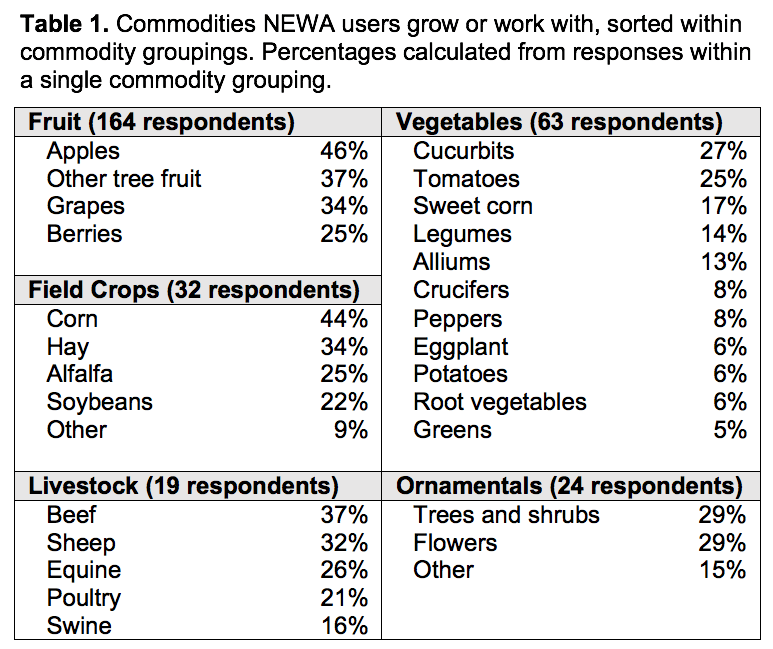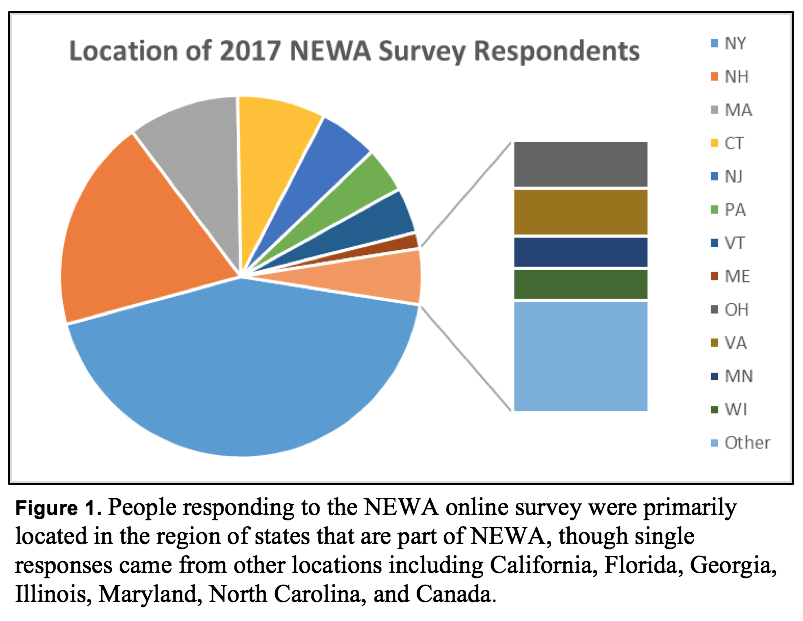This is part three in a five-part blog series discussing 2017 NEWA survey results of users and non-users. Download the full report to learn more.
By Dan Olmstead and Julie Carroll
IPM impact
“This [NEWA] is a great tool. Timing is everything, especially with chemicals that don’t last very long. NEWA is very helpful in determining when to spray.”
“NEWA is an indispensable tool for apple growers – used daily in the spring and every few days in the summer. Apple scab and fire blight models are extremely useful – many other models as well.”
– NEWA users who completed the 2017 survey
NEWA is a reliable and trusted source of information among users. All respondents said they would recommend NEWA to other growers. They also said NEWA provides reliable IPM information to support responsible management practices, enhance decision-making, and increase awareness of risks. When asked directly if NEWA helps you to improve timing of pesticide applications, 96% answered yes. Growers use NEWA to improve pesticide application timing, reduce spray applications, and reduce crop loss. These findings were consistent with 2007 survey results (Fig. 1 A and B).
Among NEWA users responding to the survey, more strongly agreed in 2017 that NEWA has a positive impact on IPM practices than did in 2007, though combined results were similar:
- 77% agreed or strongly agreed that NEWA pest forecast information helps them reduce the number of sprays they apply to control diseases, insects, mites, or weeds, compared to 81% in 2007.
- 86% agreed or strongly agreed that NEWA pest forecast information alerts them to the risk of pest damage, compared to 90% in 2007.
- 93% agreed or strongly agreed that NEWA pest forecast information enhances IPM decision-making for their crops, compared to 96% in 2007.
- 95% agreed or strongly agreed that NEWA pest forecast information improves timing of their spray applications (fungicides, insecticides, miticides, or herbicides), compared to 93% in 2007.
As a direct result of using NEWA pest forecast tools, 75% of growers are saving money on their spray bill. Grower respondents to the 2017 survey estimated annual savings of, on average, $4,329 from reducing pesticide sprays. In 2017, the pest forecast tools on NEWA also helped growers prevent, on average, $33,048 in crop loss annually. Translating costs into per acre savings, 44 respondents reported an average per acre savings of $2,060 annually, through reduced sprays and avoided crop loss.
Up next: Use of NEWA models, tools, and resources

